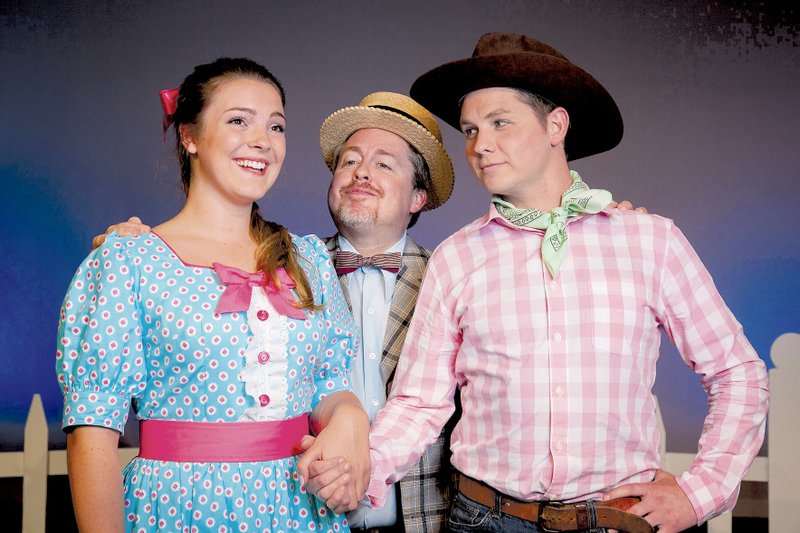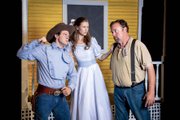It is a week before "Oklahoma" opens at the Arts Center of the Ozarks, and choreographer Alyssa Osterhout and the cast are working the complicated choreography for "Kansas City." The song is one of the larger ensemble numbers, and Osterhout is directing traffic patterns on stage that sometimes seem more convoluted than Times Square at rush hour.
Osterhaut reworks eight beats in the middle of the song. James Miskimen, who plays well-meaning-though-slightly-dim Will Parker, picks up the shuffle-ball-change combination quickly, then effortlessly combines the dance steps with a soaring tenor. The rehearsal ends with him and his fellow actors nailing the difficult lift at the end. The rough edges are quickly being sanded off of this show.
Rodgers and Hammerstein's "Oklahoma" is one of the most beloved American musicals of all time, and one ACO knows well. Vickie Hilliard was so popular in her 2009 ACO portrayal of Aunt Eller that she was asked to reprise the role. Hilliard says that one secret to the popularity of "Oklahoma" can be found in the big-hearted characters that populate the show. They, like Aunt Eller,"just want everyone to get along."
"This is just such a classic show that can't help but touch people's heart," says Marta Holt, the production's choral director.
Choosing a show with heart is only half the battle. Veteran director Kayla Abernathy feels that ACO owes much of its success to the people who work on its stage. "It's such a family that people really want to keep coming back. There's a solid, amazing core that makes it welcoming to people." In a nod to these strong familial ties, the cast and crew of "Oklahoma" will dedicate their performances to Harry and Kathi Blundell, former ACO director of theater and administrative director, respectively, in honor of their 42 years of service and recent retirement.
The cast assembles to begin a run-through of Act I. As Tyler Volz, playing Curly McClain, lifts his lovely baritone for the familiar, acapella beginning of "Oh, What a Beautiful Mornin'," it's hard to think of a more iconic representation of the American musical theater. But on the night the show debuted in March 1943, the very act of opening a musical with a single voice was startlingly new. Audiences had been trained by popular musicals of the era to expect rousing, ensemble-led opening numbers.
Though it's difficult now to think of the long-running Rodgers and Hammerstein show as revolutionary, when it first opened, "Oklahoma" defied all musical theater conventions from years past. Rodgers and Hammerstein -- in their first collaboration -- were determined to adapt the play into a musical in which the story was paramount. Dancing and music would further the plot instead of being used to solely to entertain the audience. Renowned choreographer Agnes De Mille eschewed a scantily clad chorus line in favor of ballet dancers, who would perform what, at the time, was referred to as "folk-art ballet."
The show's out-of-town previews received poor reviews, and gossip columnist Walter Winchell quoted his assistant's telegram about the musical in his column: "No girls. No legs. No chance." Show investors worried, but after opening night, "Oklahoma" was an instant hit. The once-revolutionary work has become the standard bearer for the American musical theater tradition.
NAN What's Up on 07/15/2016


